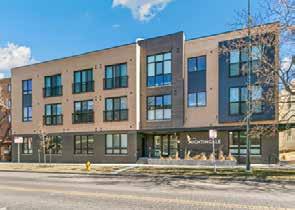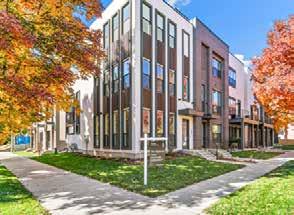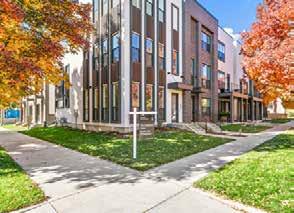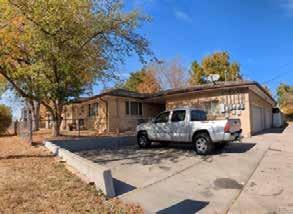

ENVIRONMENT
No, You Still Can’t Swim in the South Platte; Here’s Why
EDUCATION
La Raza Report Finds 35 Opportunities to Improve DPS

City-School Committee

ARTS & CULTURE
‘Cheyanne,’ a play by Cipriano Ortega, Opens April 26 PAGE 8



No, You Still Can’t Swim in the South Platte; Here’s Why
EDUCATION
La Raza Report Finds 35 Opportunities to Improve DPS

City-School Committee

ARTS & CULTURE
‘Cheyanne,’ a play by Cipriano Ortega, Opens April 26 PAGE 8

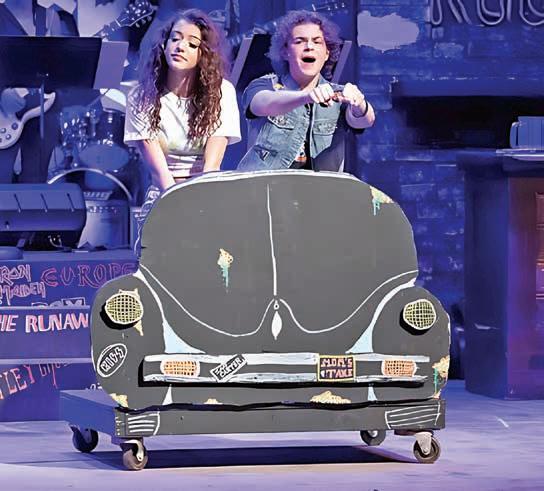
 By Erika Taylor
By Erika Taylor
Cast, understudies, set construction, stage crew, lighting and sound crews, vocal direction, dance, choreography, direction, technical direction, music student directors, stage management, sponsor relations, fundraising… 125 moving parts.
Staging “Rock of Ages” at North High School was a Herculean task, even before a snowpocalypse arrived to cancel school and opening night on Thursday, March 14. When a second snow day was called for Friday, it seemed the entire production was in jeopardy.
Preparations for the school’s spring musical began in December and were meant to culminate in a single weekend of performances. Unlike sports, if a theater performance is canceled, it's unlikely to be rescheduled. But before disappointment could fully set in, North staff jumped into action.
haven from a sometimes chaotic world,” theater director Megen Gilman said.
Gilman’s dedication to inclusion has drawn students to both the school and the arts program, as evidenced by its bursting-at-the-seams student population. At North, if you want to be involved in the spring musical, there is a place for you. Enabling students to experience the arts regardless of their experience or ability level is key to the program’s success.
“All students are encouraged to participate in theater and join the thespian family which, for many of them, is their haven from a sometimes chaotic world.” – Megen
Gilman, Theater Director
Principal German Echevarría went to bat with the district. Students performed a full four shows, despite the storm and shuttered school buildings, ending with a free Monday night performance packed with students and staff.
“This is the playoffs!” Echevarría said. “You can’t cancel the playoffs.”
“All students are encouraged to participate in theater and join the thespian family which, for many of them, is their
In December, Gilman won the Denver Mayor’s Award for Excellence in Arts & Culture for Youth, an honor bestowed on an “individual or organization that has significantly impacted the lives of youth in the City and County of Denver through the arts.” A teacher in Denver Public Schools for more than 20 years, Gilman has led North’s theater program for the past 11. When she arrived on the scene, the theater program was nearly nonexistent, but her commitment to giving students creative freedom and a safe space, alongside her belief that all students can be performers, brought theater back to life at North.
You might think this approach leads to the kind of school performances where parents are the only ones clapping, where “participation ribbon” performances sacrifice quality in favor of making sure everyone gets a turn. You would be mistaken.
From the first glimpse of the set, the audience
3rd Avenue Sculpture Studio will leave the Sloan's Lake neighborhood later this year after being part of the community for over 32 years.
Dennis West founded the studio in 1992. It has been run by his daughter and son-in-law since 2018, when West died from an aggressive brain cancer.
West grew up in North Denver at West 42nd Avenue and Clay Street. He was one of the first male students to attend Loretto Heights College as an arts student, where he studied painting and silk screening. He later started welding on his own.
Amoreena Corbin, West’s daughter and current co-owner of the studio, shared that he always described himself as a self-taught artist.
Corbin said her favorite childhood memories of the studio were the community parties thrown by her dad. She also remembers the studio as a gathering place for neighborhood kids, and that people appreciated they had a place to hang out in the neighborhood.
Back then, Corbin said, her father wasn’t known for his art, but he helped in the community by fixing things like bikes or broken chairs. His work transitioned when neighbors began asking West to take on practical projects like gates. He realized there was an opportunity to make a living helping out neighbors. As West created those things for neighbors, he did his best to make them artistic. Corbin said that spirit has remained with the studio, where today they undertake “functional art” projects alongside more artistic sculptures.
West’s metal sculpture artwork–the functional railings and gates and the more decorative–can be seen all around the neighborhood. Examples include the window bars at Toast liquor store on West 23rd Avenue, numerous sculptures in the Sloan’s Lake neighborhood along King Street and Lowell Boulevard, and gates and fencing along Hooker Street. He also created the Pizza Alley sign and table tops for Stella’s restaurant on West 32nd Avenue.
“Most of the steelwork in the neighborhood that is not boring came from our shop,” Corbin said.
Outside the neighborhood, notable pieces by the studio include arbors at the Denver Botanic Garden, a gazebo at the Courage Garden at the Jefferson County Courthouse and a large public art piece in Norman, Oklahoma, designed by Vito Di Bari.
In 2010, Corbin’s spouse, Josh Corbin, started working with West off and on. Josh’s dad was also a welder, with expertise in structural welding. West’s more artistic style started to rub off on him. Josh came back to work with West more regularly in 2018, and shortly thereafter in

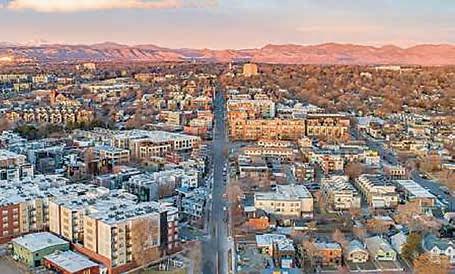
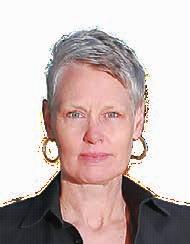
Nacross Colorado have been asking themselves if traditional election coverage has served communities well, if it’s been too driven by the horse race of polls and pundits, or if reporters have listened too much to candidates and not enough to you, the voters.

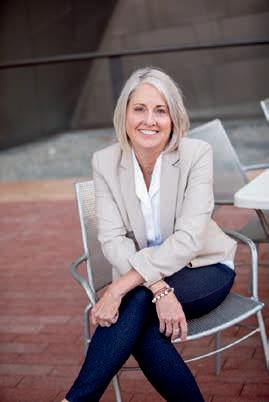





The Denver North Star is joining newsrooms across the state in doing something that we all need to get better at: listening.
Voter Voices 2024 asks Coloradans what their priorities are in this election cycle so that we can report and write more responsive, representative and fair stories. We want to capture not simply the odds, but the stakes.
young voters and talk about the questions they see on the survey, exchanging ideas on issues that matter and how our democratic process, political parties, government entities and elected officials can best serve every level of community, from North Denver to the country as a whole.
We want to hear from YOU, whether you vote in every election or only once in a while. Whether you’re conservative, liberal or somewhere in between. Whether you’re a Republican, Democrat or aligned with a less prominent party — or no party at all. Whether you’re inspired by what you envision the country can become, or have lost hope.

The heart of Voter Voices is a short survey built around a key question: “What do you want candidates to talk about as they compete for your votes?”
At The Denver North Star, we’re particularly interested in hearing from voters casting a ballot for the first time. We hope teachers and parents will gather around a table with
What are your top three concerns? How much faith do you have in the election process? We’re asking you to tell us a little about yourself so that we can ensure that we are, in fact, listening to all parts of our community. You can choose to remain anonymous. We hope you won’t.
Please, take a few moments to scan this QR code and fill out the survey. Colorado voters can guide us in creating a model for election coverage that puts citizens — what you care about and why — first.
When a demolition crew and excavator turned up at the former El Padrino restaurant site last month, neighbors sprung into action snapping photos and cautioning workers not to injure the feral spayed/neutered cats who’ve made the property their home. A volunteer effort by a neighbor and helpful city staff has gotten an out-of-control cat population under control, but seven adult cats deemed too wild to adopt remain on the abandoned and fenced-off site. The adjacent Rodeway Inn requires environmental abatement before it, too, will be demolished. The city used the former hotel as a shelter location for women, transgender and nonbinary guests between the summer of 2020 and August 2023.
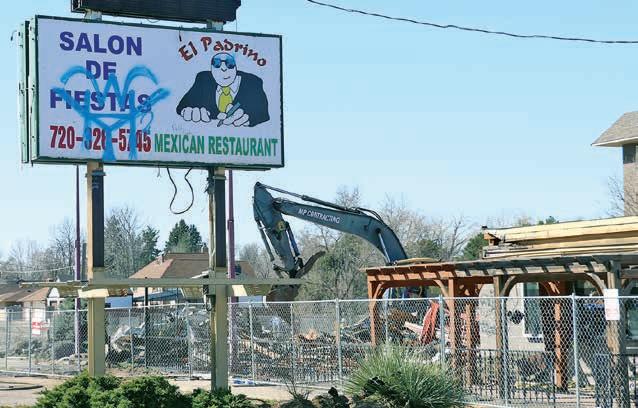
The remaining $62 million in D3 funds went toward acquiring land, including the properties at 4745-4765 N. Federal and several others, where an overall 1,200 units of affordable or supportive housing (geared toward people formerly homeless) will be built.
A spokesperson for Denver Housing Authority (DHA), owner of the sites, said DHA does not have definitive plans for redevelopment there.
DHA acquired the properties in 2020 through the DHA Delivers for Denver (D3) bond program, a partnership with the city of Denver that generated $120 million in revenue in 2019 to expedite affordable housing projects. $62.5 million in D3 funds are going to DHA’s “direct development projects,” creating 1,300 units of affordable housing.
A spokesperson for the city’s Department of Housing Stability confirmed that DHA could seek city approval to sell properties acquired through the D3 program. “If there are any parcels deemed not appropriate for redevelopment by DHA, DHA can sell them as long as 20% of any developed units are income restricted,” according to the spokesperson, “and any sales proceeds will be reinvested into the D3 program.”
DHA and its partners have until 2029 to complete the development of 1,200 units on land acquired with D3 funds.
questions exchanging ideas on democratic government entiserve every Denver to whether once in a you’re conor somebetween. WhethRepublican, aligned with party — Whether what you country can lost hope. top three much faith the election asking you to about yourself ensure that listening to community. anonymous. We scan this QR Colorado voters for election what you care demolished undergo go down.
Travelers along West 38th Avenue between Tennyson and Irving encounter numerous active construction projects and vacant lots carrying “for sale” signs these days. Beyond the visible, site development plans have been filed with the city for several more.
Most of this stretch of West 38th is zoned U-MS-3, which stands for “Urban Neighborhood Context, Main Street” with building heights maxing out at three stories. A few sections are zoned for two or five stories.
Denver Zoning Code’s “U” designation for “neighborhood context” generally characterizes residential uses where commercial areas, think shop fronts, serve nearby residents. Main Street (MS) zone districts typically constitute block faces intended to “promote safe, active, and pedestrian-scaled commercial streets through building forms that clearly define and activate the public street edge.”
The Denver North Star caught up with representatives for a few projects taking place along West 38th and looked at plans filed with the city to learn about what North Denver can expect from the transformation underway.
4345 W. 38TH AVE.
The most visible of the projects is a 40unit apartment building under construction at West 38th and Tennyson, where Country Gentleman’s Liquor store and Tennyson’s Tap operated until the COVID-19 pandemic. Most of the market-rate rental units will be one-bedroom or two-bedroom, with a few studios. Square footage will range from 550 to 1,000.
As required by zoning, retail will take up most of the ground floor.
Frank Campise, the Chicago-based real


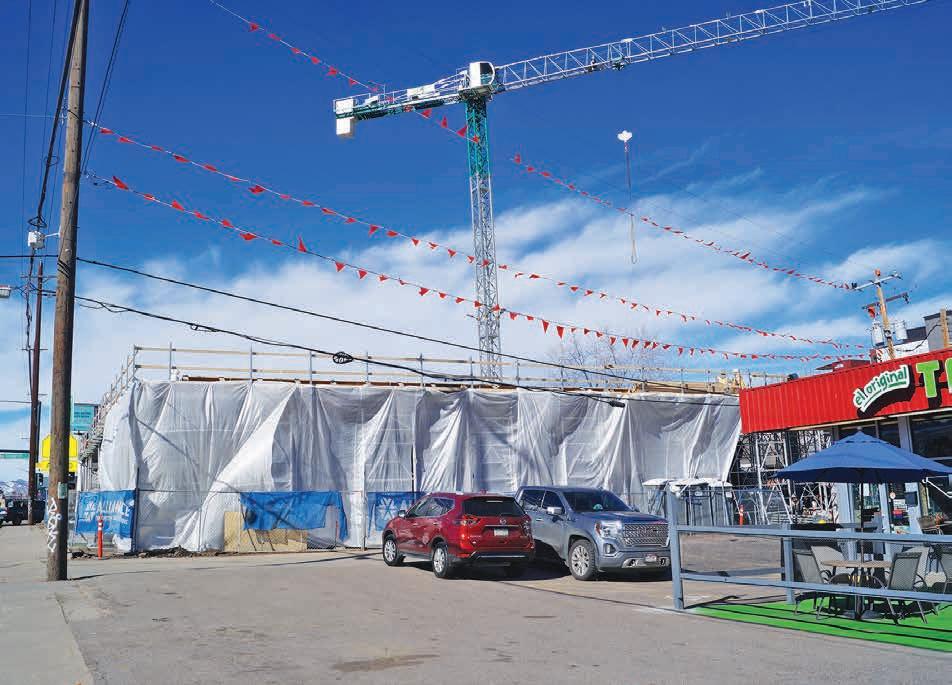
estate investor behind the project, walked 100 miles of Denver over five days in 2020 to scout out areas of the city where he might invest. He stopped people on the street, asking them what they liked and disliked about the areas of Denver where he spent time. The Tennyson Street corridor reminded him of the pedestrian-friendly Southport neighborhood in Chicago’s Lakeview community.
“That space hasn’t been activated in a number of years,” Campise said of the Tennyson corner. “To activate that space right at the gateway into the corridor is going to be a nice benefit to the neighborhood. We're excited to deliver something that people will be happy to see.”
Campise said the building is on track to be


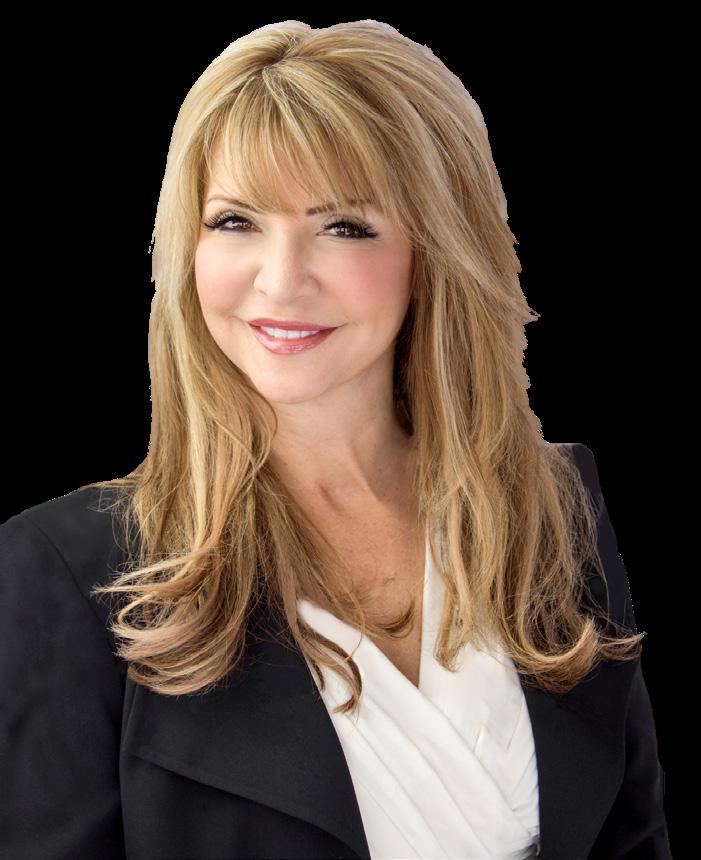

finished in the last quarter of this year.
3838 N. PERRY ST.
Five blocks west, at the northeast corner of West 38th and Perry where Lampert Hitch used to stand, RedT Homes is set to build three duplexes (six units) and three townhomes (19 units).
The homes have been designed to achieve LEED Gold certification, the highest possible level in the multifactor point system designed to gauge a building’s environmental friendliness. Units will start at two bedrooms and extend up to five bedrooms, and range in size from 1,168 to 3,017 square feet. Some will have rooftop decks, and all but one will have at least a one-car garage.

Lower rates are creating an earlier Spring market, with some homes receiving multiple offers over list price. If you’re ready to sell your home for top dollar, I’m here to

Because the property extends into a residential area zoned for single-family housing, the developer sought a zoning change to U-MS-3 in order to pursue the higher-density project. RedT worked with Berkeley Regis United Neighbors (BRUN) to inform and work with neighbors on ideas for the site.
Bill Killam, chair of BRUN’s Zoning and Planning Committee, was pleased with the one-year process between neighbors and RedT that resulted in a so-called good neighbor development agreement (GNDA). Neighbors negotiated for lower building heights where new construction will meet existing single-family homes and open-porch concepts for the homes along Perry, to retain the pedestrian and neighborhood-friendly feel of the block.
Killam added that developers had a unique feature to work around. The historic Rocky Mountain Ditch that takes water out of Clear Creek and runs it through Wheat Ridge and parts of the West Highland and Berkeley neighborhoods (mostly below ground, but in some segments above) runs diagonally under the site of the RedT development before ultimately ending at Rocky Mountain Lake. It’s an active ditch with water rights, Killam said, owned by Rocky Mountain Water Company (Molson/Coors).
RedT’s Chief Marketing Officer Kevin Bree said that two homes will be designated as affordable housing for owners making 80% of Denver’s area median income. The project is scheduled for completion in August 2025.
3930 W. 38TH AVE.
Across the street, on the southeast corner of West 38th and Perry, a crumbling cement platform remains on the lot where El Cha-
See 38TH, Page 14








Summer is around the corner, and Denver residents are itching to get outside. But before you jump into one of the city’s lakes or streams, you should know there’s still a ban on swimming.
According to the Denver Department of Public Health and Environment (DDPHE), city ordinances prohibit swimming in streams and lakes in the city and county of Denver. Wading, boating and fishing are allowed, but with warnings for all recreators to avoid water contact if you have open cuts or sores, and wash or sanitize immediately after water contact. It is also recommended to avoid being in waterways for 72 hours after storms and to avoid algae blooms.
As for the South Platte River, recreation is not encouraged by DDPHE. In addition to frequently elevated E. coli levels, which can make people sick, industrial runoff in the water can be higher due to the location. According to the Colorado Department of Public Health and Environment (CDPHE), this includes elevated levels of arsenic running from the outlet of Chatfield Reservoir to the Burlington Ditch diversion in Denver, and increased sulfate, cadmium and ammonia levels from Burlington Ditch to Big Dry Creek. There may also be hidden obstacles such as concrete and rebar, although DDPHE notes these can be found in most urban streams and lakes.
Knowing what residents can do safely in public waterways can be tricky business, especially with so many waterfront parks being built. Executive Director of Colorado Watershed Assembly Casey Davenhill, who has spent decades helping residents enjoy and clean up local waterways, noted it’s a delicate balance for city officials who want to promote river access while issuing public health warnings.
“It’s a challenge,” Davenhill said. “We want people to enjoy the river and not turn their backs on it. But we need them to know

that there are certain precautions. It’s an urban river.”
For her part, Davenhill said she’d partake in many of Denver’s waters, albeit with the recommended precautions.
“I’d kayak, innertube, wade or look for mackerel invertebrates with kids, with washing hands after and bringing water to drink,” Davenhill said. “I’d also be mindful of my surroundings, choosing areas not right below a stormwater drain or near trash and debris, for example.”
“Storm drains in school yards and parking lots, those go directly into the creeks that go into the river. Don’t dump anything in those drains. Pick up after yourself. Leave no trace...”
– Casey Davenhill, Executive Director of Colorado Watershed Assembly“Confluence Park area,” she added, “the way
it’s designed, encourages getting into the water. That’s a pretty safe area in my opinion. I’d put my own kids in there, but I’d wash them off after. But I wouldn’t swallow [water] or hold my head underwater.” Denver waterways’ dangerous levels of E. coli result from decades of human and other animal activities, including permitted levels of treated discharge from wastewater treatment plants, dog poop, bird poop and leaky sewer or storm pipes. From June through October, rates of E. coli tend to surge as out-
door use increases. Levels reached as much as three times higher than state and federal standards during 2019 in parts of the South Platte River, according to CDPHE. State officials emphasized the current data for the river is still being analyzed as part of a five-year study.
In addition to minimizing current risk, there are steps recreators can take to help reduce E. coli and other water pollutants in the future. Beyond keeping bodily discharges such as pee, poop and blood out of the water, people can make sure that dog excrement and all trash stay out of watershed areas. By properly disposing of these items, residents ensure that less pollutants run into the waterways.
“Storm drains in school yards and parking lots,” Davenhill noted, “those go directly into the creeks that go into the river. Don’t dump anything in those drains. Pick up after yourself. Leave no trace. A lot of times people think those drains go to a treatment plant, but they don't. The river is the treatment plant.”
DDPHE concurs, noting the city continues to spend copious amounts of time and money monitoring and cleaning sewer and drainage systems. And even though former Mayor Hancock’s 2013 vision of making Denver’s lakes and streams swimmable by 2020 was a miss, city officials insist the vision improved cleanliness and that they are still dedicated to the effort. It just takes time.
Nude Foods different over 1,500
“E. coli can reside in sediment in streams, and once it enters a waterbody it is extremely difficult to remove,” DDPHE offered in a statement to The Denver North Star. “Because it lives in the streams, removing a source of E. coli does not translate to a reduction of E. coli levels in the stream. As a result, it is difficult to say if E. coli levels in the South Platte River will ever be below levels that are currently deemed safe for recreation. Nevertheless, the city is committed to doing everything we can to ensure the river is safe for recreation.”


While Earth Day takes place April 22, a growing number of North Denver food-oriented businesses embrace eco-minded practices year-round.
Sustainability has always been a core principle for chef and director Justin Cucci of Edible Beats, a restaurant group with six locations, including Linger, Root Down, El Five and Vital Root in North Denver.
Each restaurant operates on 100% wind power, invests in compostable bags and gloves, and sources 50% of its ingredients from within Colorado.
However, Cucci hasn’t stopped there. Located behind Vital Root, the plant-based restaurant on Tennyson Street, a 320-squarefoot shipping container stands, containing 7,800 plants at any given moment and delivering 120 pounds of fresh vegetables every week, year-round.
“Saving
Yet, Edible Beats isn’t the only establishment making efforts to reduce its carbon footprint and help customers reduce theirs.
Nude Foods Market, a recent arrival to North Denver, is a zero-waste grocery store based out of Boulder. Its location at West 44th and Lowell, next to Tocabe, is scheduled to open April 10.
Named as one of the top 15 independent grocers in the U.S., Nude Foods Market was founded in response to the staggering 23 million garbage trucks’ worth of waste produced by Americans every year.
the world seems to take a lot of effort, but in this case all you have to do is change where you buy your groceries,”
– VerityCoined BeatBox Farm, this shipping container contains a vertical hydroponic farm created by Colorado FarmBox Foods, a company dedicated to providing a solution to the global food crisis by building and designing high-yield and low-carbon-footprint container farms.
The market’s founders recognize that one of the largest environmental challenges today is the prevalence of plastics in grocery stores. And while recycling these plastics can be part of the solution, Colorado’s recycling rate is only at 16%, about half the national average.
Noble, co-founder of Nude Foods Market
To combat this, the market operates on a refill model, encouraging customers to bring back the container they initially purchased goods in or bring their own, instead of discarding the packaging after a single use.
Denver Public Schools released a report March 19 intended — after decades of complicated twists and turns between the district and Latino community — to finally create an effective and sustainable strategy for addressing barriers and seizing opportunities for the success of Latino students and families.
A research team from The Multicultural Leadership Center, LCC, combined a historical analysis going back 100 years and student data going back to 2008 with lessons from 51 focus groups at 15 schools and a survey. In total, the project team reached over 3,500 DPS students, parents, teachers and staff, administrative leaders and members of community groups.
In the week following the report’s release, researchers met with groups of stakeholders who had provided input along the way, such as parents and principals, for in-depth conversations about their findings.
Dr. Ramon Del Castillo, who has long been involved with efforts to improve the district’s approach to Latino students, and is an educator himself, played an active role in the project.
“I think they were pleased that somebody heard their voice,” Del Castillo said of the stakeholder gatherings. “For the longest time, Latinos in Denver Public Schools have been left without an effective voice to talk about those things that need to be changed.”
The report details 35 recommendations under the headings of district level, students, parents, teachers, school leaders and
central office staff.
Among them, the district-commission La Raza Report calls for greater coordination between the district and nonprofits, Denver-area employers and the city. It calls for a culturally competent curriculum and teacher capacity to effectively deliver it. It calls for recruiting and retaining greater numbers of Latino teachers, and it asks the district to further explore what it described as a “brown ceiling,” where numbers showed fewer Latinos in high-level roles and where Latino study participants described curtailed professional opportunities and pressure to “act white” in order to advance.
Del Castillo said that Dr. Alex Marrero, DPS superintendent since 2021, will have to conduct his own assessment of the recommendations in order to determine priority areas and move forward with implementation.
Among the report’s findings, a lack of equitable resources for Latino students and schools stood out to Del Castillo.
“One example is a case where parents were talking about feeling vergüenza. Vergüenza, in Spanish, is the concept of shame,” Del Castillo explained. “Their kids would get their raggedy shabby basketball clothes on and go across the tracks, so to speak, to these big schools, and see all the resources that these schools had. And they’d ask the question, ‘How come we don't have that?’”
Del Castillo added that in the focus groups he facilitated, he was struck by what
See LA RAZA, Page 13
"Installing our own vertical hydroponic farm has always been a dream of ours,” Cucci said. “As a way to combat the somewhat innately wasteful restaurant industry, we have a commitment to sustainability and waste reduction for all our restaurants.”
However, the real magic lies in its efficiency. BeatBox Farm uses 99% less water than a traditional farm, all while avoiding the use of pesticides, insecticides and fertilizers. Additionally, it removes the necessity for regular produce shipments, which decreases both packaging waste and the emission of greenhouse gasses.
The BeatBox Farm yields 10 times more produce annually than a traditional farm of equivalent size, operating at a daily energy cost of roughly $20 while only using four gallons of water per day.
The diverse selection, including kale, arugula, watercress and a variety of aromatic herbs, enables Edible Beats to craft fresh and delicious dishes while also prioritizing environmental sustainability.
“Our FarmBox-grown produce and herbs are fresher for diners, more eco-friendly, and our kitchens love having this hands-on connection to the food we make,” Cucci said.
“Saving the world seems to take a lot of effort, but in this case all you have to do is change where you buy your groceries,” said Verity Noble, co-founder of Nude Foods Market.
Products arrive at Nude Foods either prejarred or in reusable containers, which suppliers reclaim after delivery. For items not sourced locally, such as nuts or seeds, they arrive in single-use bulk packaging that is then either recycled or composted.
Nude Foods partners with farmers who adhere to eco-friendly practices, and they conduct thorough research into their supply chain to ensure it’s as clean and environmentally conscious as possible. Groceries purchased at Nude Foods can also be delivered by electric vehicle or bicycle to Boulder, Denver, Superior, Gunbarrel, Lafayette, Niwot, Louisville and Central Denver.
Newcomer Nude Foods joins two established refill businesses in North Denver, Joy Fill at West 35th and Tennyson and Zero Market at Edgewater Public Market. Both carry substantial inventories of refillable and sustainable household cleaners and personal care products.
Neighbors are invited to join Nude Foods Market on April 16 to celebrate the opening of the store at 3538 W. 44th Ave.






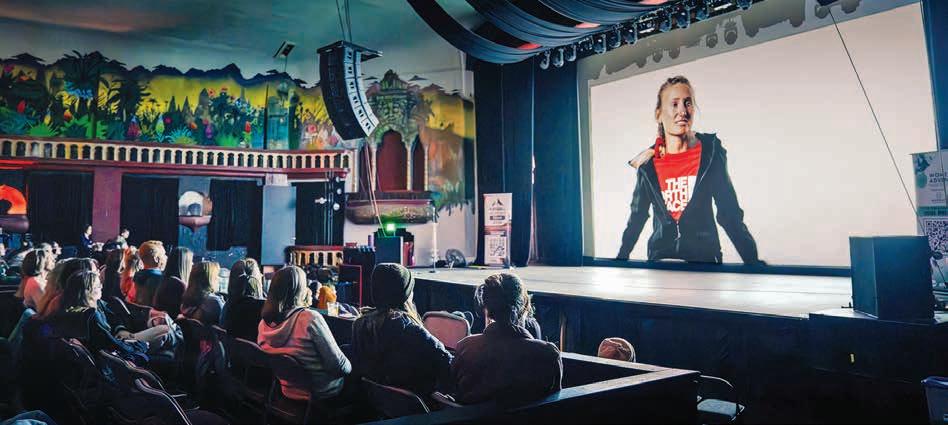
Throughout the year, a local Berkeley theater hosts dozens of movies about outdoor adventures. Film festivals meant to sell movies and create buzz have evolved into gathering places where enthusiasts can forge deeper connections, hear underrepresented stories and get excited about the adventure season ahead.
Last month, outdoor enthusiasts watched hours of people recreating in the Women's Adventure Film Tour, the Kendal Mountain Film Tour, the Fly Fishing Film Tour and the National Paddling Film Festival at The Oriental Theater, also known as The O.
These festivals have done their job building excitement for the season, but they're also telling important stories from marginalized communities that may have been rippling beneath the surface for decades.
"There are a lot of people deserving of these stories to be told,” Golden-based filmmaker Riley Hanlon said. “These new films show the industry what else is possible instead of just celebrating the status quo."
"I feel so strongly about centering diverse voices and seeing that merge into stories of different ways to get outside," continued Hanlon, who directed the documentaries “Mt. Blue Sky” and “COMBA, We Love You.”
Conor Ryan, a Hunkpapa Lakota, professional skier, Indigenous filmmaker and former Denver resident, uses film to reframe how people think about being outside.
In the past, "the way of telling stories has only focused on one particular way of experiencing the outdoors,” Ryan said, “and that is inherently a white way of telling the story.”
"People in our communities really have a desire to see diversity and collective action mirrored in the mountains," Ryan said.
The Women’s Adventure Film Tour on March 27 went beyond being a forum for women who excel in sports historically dominated by men to showcase their adventurous spirits. Several of the films had more profound messages of inclusion and accessibility.
The film “The Ascension Series — Morag Skelton” is part of a series that explores stories of people pushing through barriers to define themselves in the great outdoors. Morag, a deaf climber, reminds viewers that "the outdoors, it’s for everyone." In another film, “A Bitch of a Race,” a group of women and people of underrepresented gender identities tough it out against the elements and hills of Pittsburgh in an alley-cat style race created just for them.
Andy Bercaw, owner of The Oriental Theater, said these film festivals are really successful. When he first started hosting them 15 years ago, "a ton of people attended, and they were really stoked to be there," and not much has changed in that regard.
Any adventure-seeker can tell you it feels good to be in a room filled with people who share your love for a sport, and to watch those who perform it exceptionally well on the big screen. A theater full of shared interest and joy also provides a safe space for people who may have historically been on the margins of their sport to share their perspectives.
"There's an incredible sense of kinship in that space. It's a powerful feeling," Ryan said.
Through his work, which included coproducing and codirecting “The New Radical,” a ski series that aired at the Salomon Quality Ski Time Film Tour at The O in November, Ryan is seeing a collective shift toward people wanting to hear Indigenous stories.
It’s fun, it’s free and you’ll be glad you came! Join the Denver Woman’s Press Club for an open mic event on Friday, April 19, from 5 to 7 p.m. at its historic clubhouse at 1325 Logan.
Members and nonmembers are welcome. Parking is free in the adjacent lot to the north.
Drinks and snacks are also free, and the atmosphere is warm and nurturing. A supportive audience is eager to hear your work. Take
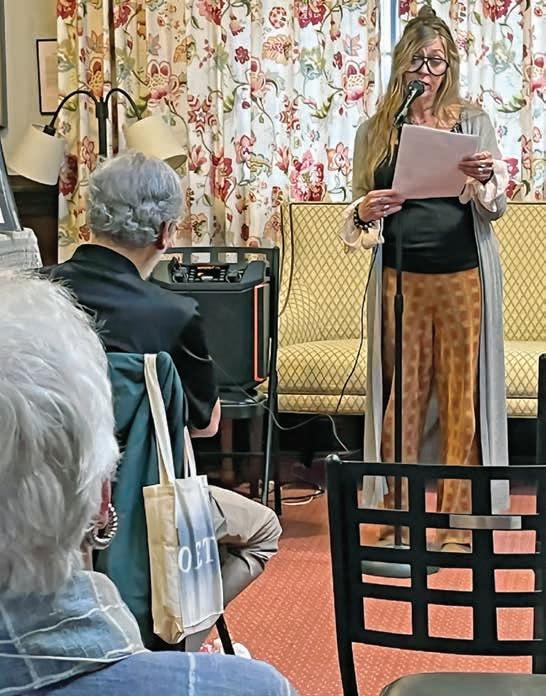
November, Ryan is people wanting really have collective action said. Tour on forum for historically domadventurous profound accessibility. — Morag explores stories to define Morag, a "the outanother film, “A and people identities tough it Pittsburgh for them. Oriental Thereally suchosting them 15 attended, and they not much you it feels people who watch those on the big interest and joy who may margins of their kinship in Ryan said.

audience
Trevista is like one big family, there are really good people there,” said Anisha Berrier. Berrier’s two children attend Trevista at Horace Mann, an elementary school located next to Ciancio Park at Navajo and 42nd.
“It takes a village,” Berrier said, “and Trevista has been my village.”
Trevista first opened as an ECE to eighthgrade school in 2008 when Smedley and Remington elementary schools and Horace Mann middle school combined, then shrunk to ECE to fifth grades in 2015 with declining middle-school enrollment. Today, 388 K-5 students and about 100 ECE students fill the school.
Amy Murin said she feels the power of the Trevista community every time she drops her second-grade daughter off for school. Xavier Sherman, dean of school culture, waves enthusiastically at students and greets them by name. Murin's daughter gets a hug from last year's teacher on her way toward the building, and then another from this year's teacher. Murin said Trevista's welcoming community encourages students to connect with one another and try new things.
If you ask Trevista students why they love their school, they're happy to tell you: friends,

teachers, school musicals, sports teams, after-school activities, the list goes on.
Trevista's brick exterior exudes a sense of safety and soundness. Inside, voices ring out from classrooms and bounce up and down the halls. A poster of Trevista's mascot, Frankie the Falcon, hangs in the main hallway. Students earn feathers and attach them to Frankie when they demonstrate Trevista's core values. “Ms. Mullins is like the backbone,” Berrier

said. “The teachers are the legs and the arms, Ms. Mullins keeps everything together.”
Principal Jessica Mullins joined Trevista as a fifth-grade teacher 11 years ago and became principal in 2020. She said Trevista teachers and staff work hard to create strong relationships with students and families and foster a safe and healthy school environment.
“You have to let students and families know how much you care about their learning, their success, and their social-emotional well-being,” Mullins said.
Since its founding, Trevista has supported economically disadvantaged students and their families, with Denver Housing Authority's Quigg Newton Homes sitting just north of the school.
Berrier said finding the Trevista community was the best thing that could have happened to her family when they moved to North Denver a few years ago. She said the school is great at communicating with families who work during the day and that teachers have even given her children rides to school on days they miss the bus.
Love and acceptance are central to Trevista's school culture, said Mullins. From classroom teachers to support staff, each person
is seen as critical to fostering school values. The school’s high teacher retention provides continuity for students, which in turn helps them feel at home.
Mullins called Trevista a “teaching academy,” where professional development is prioritized and teachers are encouraged to share knowledge and help each other. A few years ago, teachers suggested the school revoke a rule requiring students to walk silently in the hallways. Now, students can be seen skipping or hopping on one leg down the halls with smiles on their faces.
In 2012, Trevista scored a red rating, the lowest possible, on the Colorado Department of Education (CDE) School Performance Framework. A turnaround plan was established, and by 2015 the school had rebounded and upgraded its rating to green.
Last year, Trevista received the DPS Whole Child Distinguished School award. Next, it hopes to achieve the CDE blue rating for distinguished schools.
In 2018, Trevista opened its dual language immersion program to better serve the neighborhood's native Spanish speakers.
Murin said the program is “an amazing opportunity for her [daughter] to begin to realize that her world is way bigger than North Denver.” This year, her classroom spent time each week learning about a different Spanish-speaking country: its customs, holidays and how Spanish sounds different there.
Trevista has seen changes in the community it serves. Ten years ago, 98% of students qualified for free or reduced-price lunch; today that number is 64%. Some at the school say Trevista's economic diversity helps students understand experiences outside their own and learn to show empathy.
Trevista families volunteer for afterschool activities, show up for performances and field day and attend PTA meetings. Mullins knows that involvement with the school looks different for every family. The most important thing, Mullins said, is to “advocate for your child” and then “watch them shine.”
The universal themes of gender, class, race and aging are touched on in North Denver native Cipriano Ortega’s first full-length play. “Cheyanne,” is a romance focusing on an artist couple pulled between their creative vision and the pressures of the art market while also considering family, relationships and their future.
“The play showcases how artists of color struggle to navigate the complex and nuanced art world,” Ortega said. “I wanted to craft a story that is relatable to the wider community but encourages artists, gallerists and others in the art world to attend and join the conversation.”
Set in a small apartment, artist Cheyanne and her boyfriend, Rodrigo, care for her aging father while they work to create a painting their art dealer is expecting. Their seemingly straightforward interactions are charged with subtext while the couple disagrees during the creative process and the elder Frank struggles with memory but not with expressing his feelings.
Ortega said he built the fictional narrative of “Cheyanne” around his observations and experiences of his formative years. The play was initially born from a college theater class assignment to write a 10-minute, one-act play. Ortega said he was inspired to expand the story and bring it to the stage after seeing Colorado’s former poet-laureate and North Denver native Bobby LeFebre’s 2019 play “Northside,” which addressed gentrification.
“Cipriano not only wrote the play but is doing the set design and assistant directing. He is a very talented young man. I am honored and happy to help him get his ideas out there.” – Phil Luna
Ortega grew up immersed in the arts through his artist and educator parents, Sylvia Montero and Tony Ortega, who showed him the power of creativity. In 1998, at 8 years old, Ortega exhibited in his first art show alongside his mother at the since-shuttered Zip Gallery on Navajo Street.
“After seeing his play, I had the courage and motivation to speak to these issues as they relate to the art world,” Ortega explained. “I also wanted to bring the introverted, introspective side of the creative process to the stage as I do not often see that perspective portrayed.”
Acting since he was young with Phamaly Theater Company and Su Teatro, Ortega went on to study stagecraft at Denver School of the Arts and then sociology at Regis University. He described himself as a sociological artist, using visual art, poetry, music and theater, or a blend of these disciplines, to deconstruct stereotypes and observe them from what he described as a nihilistic perspective.
As an Indigenous Person of Color, Ortega said he feels he has no choice but to deal with colonialism head-on by making a daily practice of recognizing the divisions society creates and normalizes, striving to create work
that challenges others to do the same. He shares his pride in his Chicano culture and his queer identity but said he chooses not to wear these labels on his sleeve.
“I hope that people can learn to transcend assumptions about others through art experiences such as this play,” Ortega said. Ortega teamed up for this production with longtime friend and director Phil Luna, whose extended family of creatives is also connected to North Denver. Ortega and Luna first worked together as actors with Ortega later serving as Luna’s assistant director on Diego Florez-Arroyo’s "Cuauhtémoczin,” which ran in 2023 at the MCA Holiday Theatre. Ortega said that he and Luna initially connected through heady discussions about art and theater.
“As an actor, musician and now a playwright, Cipriano is a true renaissance man,” Luna said. “I want to help him as much as possible by sharing my knowledge.”
Regarding the current production, Luna added, “Cipriano not only wrote the play but is doing the set design and assistant directing. He is a very talented young man. I am honored and happy to help him get his ideas out there.”
According to Luna, “Cheyanne” mirrors the struggle of all creatives: “It is allegorical of an economic system that seems to make us choose between a life of art and a life of artifice—being true to yourself results in living an authentic existence.”
Ortega will perform in the play alongside actors Iliana Lucero Barron, Angel Mendez (also a Northsider) and Magally Luna.

Control Group Productions, a Denver-based performance company and artist services organization, is producing the event. “Cheyanne” runs April 26 through May 5 at The People’s Building (9995 E. Colfax Ave.). Tickets, tiered at $18, $28 and $38, are on sale at www.controlgroupproductions.org. Pricing tiers are self-selected and intended to make the play more accessible to all. Audience members who do not have a financial barrier to attending live events are encouraged to purchase tickets at the higher tiers.
Elementary school values. retention provides turn helps “teaching acadedevelopment is priencouraged to share few years revoke a silently in the seen skipping halls with rating, the Colorado DepartSchool Perforplan was school had reto green. DPS Whole award. Next, rating for language the neighamazing begin to rethan North spent time different Spancustoms, holidays there. community students qualitoday that say Trevstudents underand learn afterschool performances and field Mullins knows looks difimportant “advocate for your
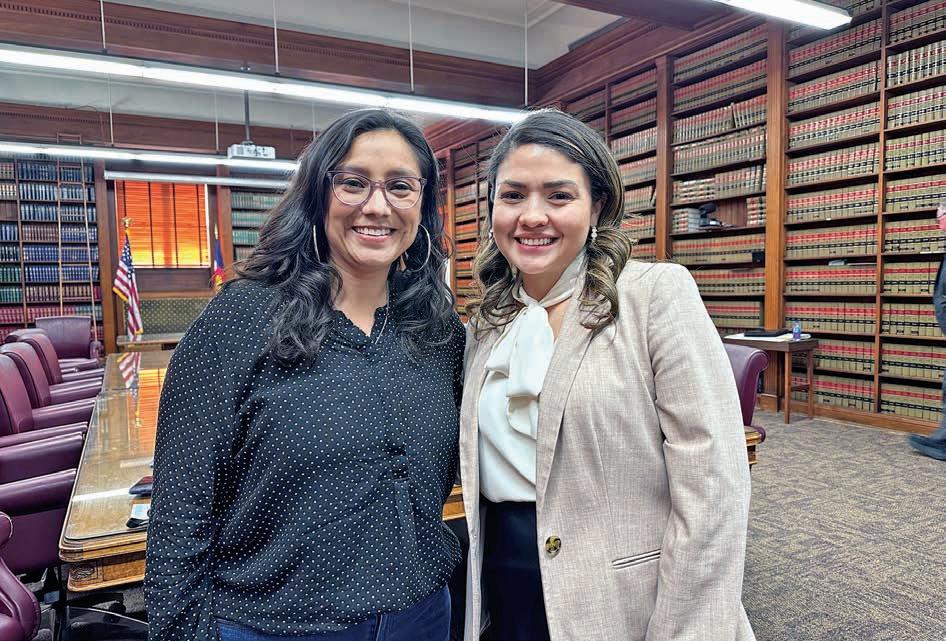
Arevived City-School Coordinating Committee (CSCC) met for its first time March 22 after being legislated back to life last November by City Council members Amanda Sandoval and Serena Gonzales-Gutierrez.
The CSCC is intended to bring the city and school district together and is written into the city’s Revised Municipal Code.
“As a parent of kids attending North Denver elementary, middle and high schools,” Gonzales-Gutierrez said, “and as a former Northside DPS alum, I am hopeful that this collaborative committee will create better communication between our school district and city partners, as we all have the same goal in mind, which is ensuring our kids and families are having their needs met here in Denver.”
The 10-person group, guided by a professional facilitator, uncovered several priority opportunities for coordination: response to new-to-country students and families; support services and resources provided by multiple entities and collaborations; youth safety and violence around school communities; and student mental health.
Denver North High School graduate Adella Arredondo, now executive director of Family and Community Engagement (FACE) at DPS, spoke to The Denver North Star after the meeting, saying that gentrification in North Denver meant her family wasn’t able to remain in the area.
“It's really important for me to be at this table today, to think about how we advocate for our communities as Denver is changing,” Arredondo said.
“I’m proud to have graduated from North High School, to have that Northside pride,” Arredondo continued. “And how do we make sure that Denver is affordable, so that our families and our students can take advantage of the many resources that both the city and Denver Public Schools have?”
Michelle Quattlebaum, DPS school board member, proposed the group undertake an immediate discussion of the impact reduced recreation center hours could have on summer meal program availability. Mayor Mike Johnston echoed the concern, admitting he
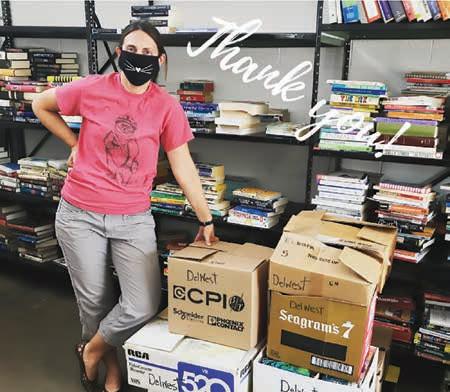
hadn’t been aware recreation centers were used for the program. By meeting’s end, the group had agreed to map out summer meal program hours and locations, and consider the importance of geographic access by foot and public transportation. It had set a goal of ensuring no community would be left without access to summer meals.
Rose Martinez, a DPS parent and community engagement coordinator at a DPS school, raised the question of how families will learn about changes to the summer meal program and other opportunities relevant to families as the committee begins rolling out its recommendations.
Quattlebaum suggested the group use the “fist to five” voting technique to determine whether to move forward on a recommendation. In this method, a fist signals “no support” while a full five fingers say “all in.” The approach allows voting members to display their degree of support — or concern — for an idea by putting up one, two, three or four fingers. A variation of fist to five, which gauges understanding (versus support), is used by teachers for feedback on whether a topic has been mastered by students in class.
Wrangling between the city and school district that characterized the CSCC’s reformation in the fall was absent during the March 22 meeting. The school board had bristled at City Council’s approach to circulating early bill drafts, and the district countered with changes to the types of members who would comprise the group (and who would appoint them). Ultimately, the entities found common ground, City Council moved forward with the measure, and the Mayor signed the bill into law Nov. 16.
The committee, first written into city ordinance in the 1930s, fell out of use over a decade ago. Now resurrected, its mandate requires it to meet at least once every two months. Members will serve for two years and may be reappointed for successive terms.
Gonzales-Gutierrez and Quattlebaum will co-chair the CSCC.
CSCC meetings are open to the public. Agendas and location can be found at denvergov.org/citycouncil under “City Council Committees.”





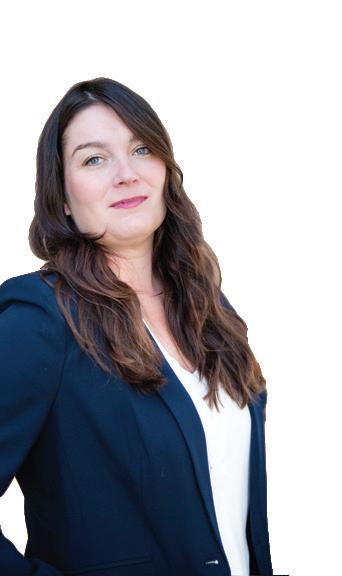
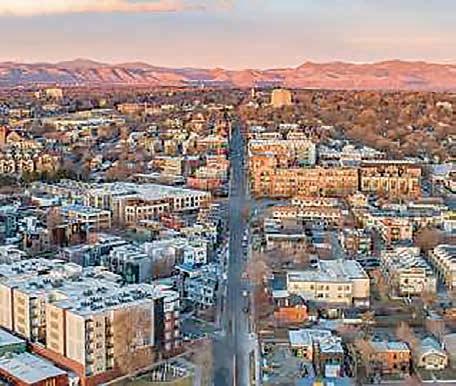





One of the best things about our North Side neighborhoods is the number of residents who contribute to our sustainability ethos, which includes urban gardening. Many individuals have turned part of their lots into food-producing gardens that nourish their families and often yield enough to donate or sell.
Gardens are not a new phenomenon. In the late 1800s, the North Side Women’s Club (NSWC) and Women’s Club of Denver (WCD) set up community and school gardens in the North Side. The clubs acquired the plots partly because they were adjacent to the streetcar lines, which allowed access for people from other parts of the city.
Members of both clubs followed the ideals of the Social Gospel movement. Influenced by Hazen Pingree, the socialist-reform mayor of Detroit, and local reformers like Denver’s Rev. Myron Reed, they practiced a more cooperative form of aid than some of their more mainstream sisters. This allowed immigrants to make use of resources on their own terms.
In 1894, the WCD began a project called Pingree Gardens, named after Mayor Pingree. The gardens were originally located in central Denver, then the women acquired four plots totaling about 10 acres in North Denver. Two were on land donated by Andrew Wilson, the first on Goss (Tejon) Street between West 32nd and West 33rd, and the second on West 32nd between Arlington (Shoshone) and Witter (Quivas) streets. The third was located near West 38th and Eliot streets, and the fourth was at the site of the Acacia Cemetery, a Masonic and Odd Fellows graveyard at the site of the 1890s-built Asbury Methodist Church (3011 Vallejo St.) that now serves as The Kirk of Highland event venue. Gardens one and
two were in the Italian section of North Denver.
The group’s published intent was “to keep aimless persons continuously working and learning the value of self-support.” Their words sound like a cold ideology of superiority, but the women’s clubs applied the philosophy with a rather gentle touch. In 1898, the garden committee worked cooperatively with Arapahoe County to teach people how to garden so they could feed themselves, sell vegetables for income or give them away to others who did not have access to farmland. They even provided additional support to one man as he established a profitable truck garden. The gardens took on lives of their own as they increasingly contributed to local neighborhood subsistence. By 1899 there were 75 local families using the gardens to supplement their income and food supplies.

In 1899, the North Side Women’s Club also started a kitchen garden adjacent to Webster School at West 36th and Lipan. Children at the school could grow food on their plots, which allowed them to contribute something to their families. According to NSWC records, the middle-class founders of the garden encouraged children to plant flowers as well as vegetables. A subgroup of the NSWC, the Hesperian Young Ladies’ Club, ran a children’s park where they also encouraged children to plant flowers to beautify their world. Middle-class women who had probably never known poverty valued flower gardens as much as vegetable gardens.
The garden movement, while a great help
to immigrant and working-class families, also showed the biases inherent in most “helping” efforts of the early 20th century. It is easy now to judge their efforts through our modern lens, but these women did provide legitimate aid to their new neighbors. And they worked to make a better world and better relationships between social classes.
We now have many community gardens, most run by Denver Urban Gardens at neighborhood schools and community centers. There are large gardens at Valdez Elementary (West 29th and Dunkeld Place), Academia Ana Marie Sandoval (West 37th and Zuni) and Bryant Webster Dual Language School (West 37th and Shoshone Street). Academia Sandoval also has solar
panels on the school building to offset more traditional electricity production.
In fact, across all North Side neighborhoods there are 16 gardens of various sizes. Denver Urban Gardens rents plots to people for a reasonable rate. The most popular are booked up for 2024, but others still have spaces. If you want to know where they are or want to reserve a space, you can check out their locations at https://dug.org/garden-directory-2/.
Dr. Rebecca A. Hunt has been a resident of North Denver since 1993. She worked in museums and then taught museum studies and Colorado, Denver, women’s and immigration history at the University of Colorado Denver until she retired in 2020.


Spring has arrived, and for many, thoughts turn to the garden. This month, we feature gardening books recommended by Smiley Branch Library circulation clerk and seed librarian Ryan Hurd. Here are Ryan’s picks:
“GET GUERRILLA GARDENING: A HANDBOOK FOR PLANTING IN PUBLIC PLACES” BY ELLEN MILES
Part activism, part how-to, this bite-sized volume is perfect for beginning gardeners. From the publisher: “Guerrilla gardening is the global movement of people planting in public places. From scattering wildflower seeds onto road verges to building community allotments on vacant lots, these peaceful acts of rebellion are where flower power meets people power.”
“PLANT GROW HARVEST REPEAT”
BY MEG MCANDREWS COWDENSuccession gardening ensures gardeners get the most out of their spaces and growing seasons by planting strategically, and this is just the guide to get you started. From the publisher: “Drawing inspiration from succession in natural landscapes, Meg McAndrews Cowden teaches you how to implement lessons from these dynamic systems in your home garden. You’ll learn how to layer succession across your perennial and annual crops; maximize the early growing season; determine the sequence to plant and replant in summer; and incorporate annual and pe-
rennial flowers to benefit wildlife and ensure efficient pollination.”
“GARDEN ALCHEMY” BY STEPHANIE ROSE
Chemistry meets cookbook in this DIY guide to seed bombs, fertilizers, pest deterrents and more. From the publisher: “This gardening recipe and project book is packed with over 80 ideas to naturally beautify your garden, using organic methods that regenerate your soil and revitalize your plants. By following the processes that are closest to nature, it brings the gardener in sync with the garden, allowing plants to thrive with less effort and less cost.”

etables and herbs. From the publisher: "This book will teach you the basics of growing fruit, vegetables, herbs, and the very best indoor flowers, as well as tips and tricks to reuse your food scraps and reduce your waste as you experiment with seeds."
“REBEL GARDENING: A BEGINNER'S HANDBOOK TO CREATING AN ORGANIC URBAN GARDEN” BY ALESSANDRO VITALE
“GAIA'S GARDEN: A GUIDE TO HOME-SCALE PERMACULTURE” BY TOBY HEMENWAY

This step-by-step guide to designing an ecological garden provides information about the elements that make a garden sustainable and offers a multitude of design options. From the publisher: “‘Gaia’s Garden’ has sparked the imagination of home gardeners the world over by introducing a simple message: working with nature, not against her, results in more beautiful, abundant, and forgiving gardens.”
“THE WINDOWSILL GARDENER” BY LIZ MARVIN
Planting moves indoors in this charmingly illustrated book that covers houseplants, veg-
This gentle but comprehensive guide focuses on harmony between the plant, the soil and the gardener. From the publisher: “This is the ultimate beginner’s guide to establishing and tending an organic kitchen garden in any urban space, no matter how small, written by the YouTuber and TikToker known as Spicy Moustache.”

Check out these and other gardening books at the Denver Public Library branch near you and stop by the seed library at Smiley to get a start on your summer gardening. Join us on Saturday, April 20, 2-3 p.m. for Edible Landscaping presented by CSU Denver Master Gardeners. Learn more at denverlibrary.org/events.
Wendy Thomas is a librarian at the Smiley Branch Library. When not reading or recommending books, you can find her hiking with her dogs.

Apanel of state and local officials will decide later this month whether it’s full steam ahead on a 2024 ballot measure that would ask voters to fund a new passenger rail service along the Front Range with a small sales tax hike — or to hit the brakes and wait until 2026.
The 17 voting members of the Front Range Passenger Rail District weighed the question at a series of meetings in March. Under the law that created the district three years ago, its board is authorized to refer a tax measure of its choosing for approval by voters across the district, which encompasses all or part of 13 counties along the Interstate 25 corridor.
Despite hopes that the board would settle on the size and timing of that tax measure last month, board members instead agreed on Friday on another round of consultation and polling before coming to a final decision in a matter of weeks.
“I think where we are is, we have affirmatively decided that the answer is not no,” said Chris Nevitt, a transportation manager for the City and County of Denver who serves as the FRPR’s board chair. “And we need to move with all haste, effort and resources to answer the remaining questions, to decide if the answer is yes.”
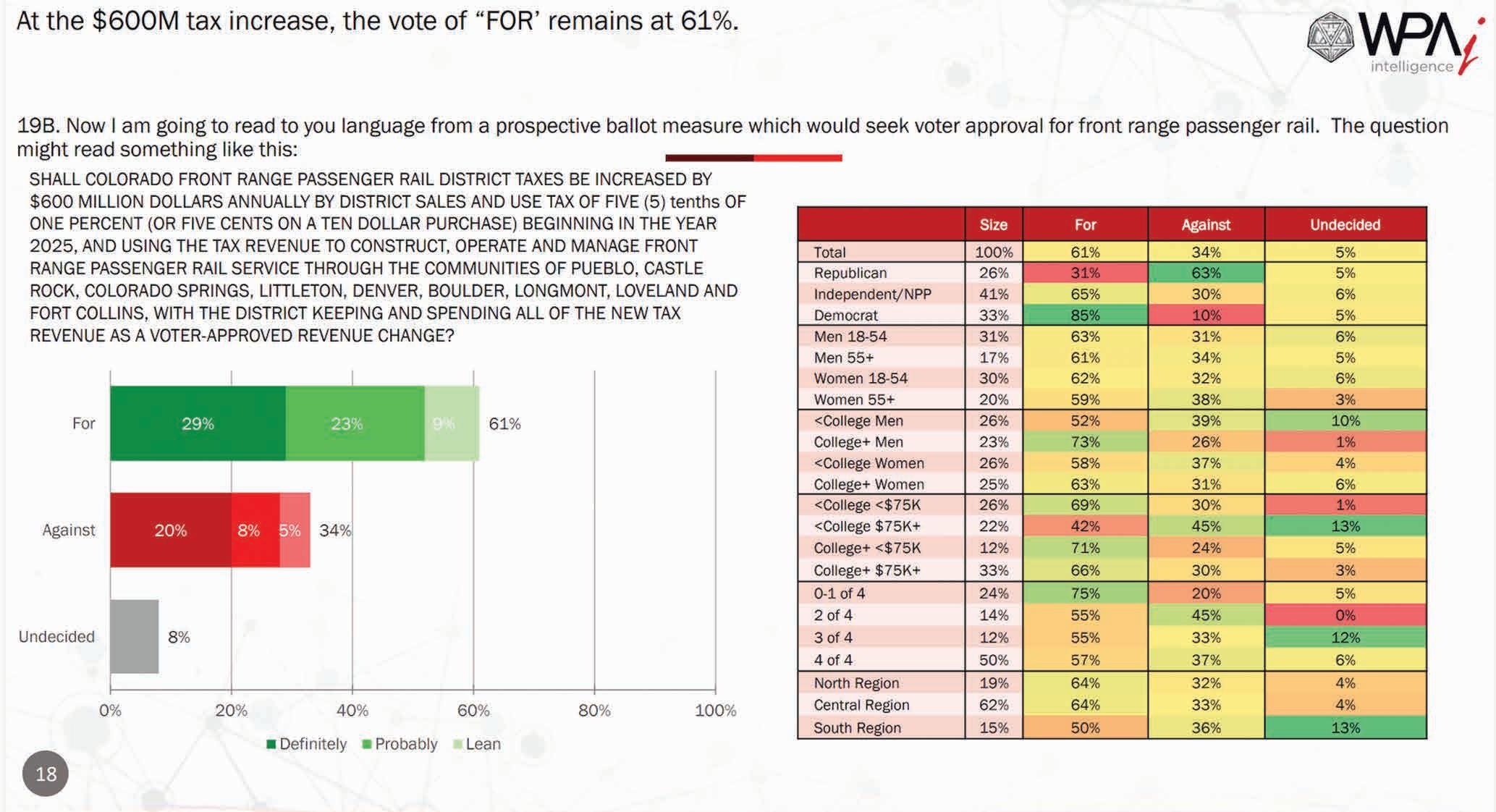
Polling conducted on the district’s behalf this year showed strong support for Front Range Passenger Rail among Colorado voters, with 73% of respondents saying they favored the project. Pollsters found that 61% of voters said they would back the proposal if it meant a sales tax increase, regardless of whether it was a 0.3% or 0.5% hike — in other words, three or five cents added to a ten-dollar purchase. The former would raise about $325 million annually for the district, while the second would raise $600 million. The cost to build and operate the service depends heavily on factors like the selected route, frequency of service and other details, which are being finalized as part of the district’s service development plan.
But according to a financial analysis presented to the board last month, even a smaller sales tax increase of less than 0.2%, if coupled with a $500 million federal grant by the end of 2026, would be enough to fund a phased approach that envisions a “starter service” of three trains per day between Denver and Fort Collins by 2029, expanding to six trains per day between Fort Collins and Pueblo by 2035.
A slide from a presentation to board members of the Front Range Passenger Rail District in March, showing polling results on a potential sales tax ballot measure. (FRPR)
Multiple board members at Friday’s meeting spoke in favor of what Claire Levy, a Boulder County commissioner appointed to the
See RAIL, Page 13
Sunnyside and Chaffee Park residents adjacent to I-70, and drivers on the highway, now see signs that CDOT’s I-70 noise wall replacement project has finally begun.
IIn late March, crews began dismantling and shredding 50-year-old timber fencing from Pecos to Zuni. A spokesperson for the project said crews will work in sections, beginning construction of concrete replacement walls as soon as possible after the timber fencing comes down. The entire project, covering 3 miles of fencing, is scheduled to wrap up in 2026.

For more information on the project, including scope and impacts (such as lane closures), visit www.codot.gov/projects/ i70noisewall.



n case you haven't noticed, almost any city block in northwest Denver is undergoing a facelift of sorts. Cranes, concrete mixers and crews of construction workers are tearing down the old and building anew to reflect the evolving demands of the Mile High City.
It seems like it was only yesterday when the kitschy “music bar” sign stood coyly on the corner of 46th and Tennyson, beckoning passersby to stop in for a drink. The sign, along with the bar itself, are gone, and the skeletal beginnings of a new apartment building have emerged.
Regardless of where you land philosophically or politically on the issue of development, change is inevitable. The best we can hope for as citizens—beyond cherishing historic buildings and voting in alignment with our views—is to hope that what’s being built will be an evolution into something beautiful and unique, rather than something cheaply constructed or aesthetically challenged (aka ugly).
How does this relate to mental health and wellness? Consider this: Symbolically speaking, we ourselves are our own developers. Within the landscape of our individual psyches, there are well-worn paths and crumbling foundations that we’ve grown so accustomed to we never question when they should be demolished to make way for new growth.
These landmarks are what’s known in therapy circles as “core beliefs,” and believe me, some of us would do well to conduct a thorough inspection of our core beliefs to discern what’s still relevant to our lives today, and what beliefs are outdated and should be torn down. Whether you’re aware of your core beliefs or not (many of them are subconscious anyway), they have the potential to influence your behavior and choices in a myriad of ways.
Case in point: A 40-something single woman who is new to town came to Denver for a sweet marketing gig in the blossoming cannabis industry. While her professional
life is something to be envied, her social life is solitary and sad, primarily because she holds the belief that it's too difficult to make new friends at her age. The “friends are too hard to find” core belief stops her from initiating new friendships or even striking up conversations. If she wants to make positive change in this area, she would do well to identify the limiting core belief and root it out, to make space for a new belief that opens her up to new friendships.
This month's challenge, dear readers, is to find within yourself at least one core belief that’s hindering you from living your best life.
Try this exercise: First, choose a pattern or behavior you've noticed about yourself that you wish to change. Start with something simple, like overcoming shyness or banishing procrastination.
Second, take a moment to get to a quiet place where you won’t be disturbed (if home is not peaceful, take a blanket to a nearby park). Do whatever you typically do to quiet your mind, whether that’s meditation, journaling or streaming chill tunes. Give this a good 10 to 15 minutes to get to a serene, blank-slate state of mind.
Give yourself the following prompt, or something similar: “I am going to count down from 10 to zero. When I get to zero, it will be revealed to me what is causing my … (insert consternating problem here).”
Note the first images, words or connections that come to mind once you reach zero. Remember to write down or record these impressions to revisit later.
Tapping into your inner guidance is a muscle that can be strengthened, so don't worry if you don't get anything the first or second time. Once you know which beliefs stand in your way, you can integrate this knowledge by leveling up your choices and behaviors.
Erin Olyer Rohlf is a licensed clinical social worker (LCSW), professional therapist and founder of Higher Healing and Wellness, LLC. Call her at 720-644-1400 or email her at eorohlf@gmail.com for information or to suggest ideas for future columns.
Data from new satellite-based technology show that the amount of methane pollution impacting communities living near oil and gas facilities is far greater than previously estimated.
As Laurie Anderson, Colorado field organizer with the group Moms Clean Air Force explained - when methane is released into the air through venting, flaring, or leakstoxic co-pollutants that have been linked to serious respiratory and other health impacts are also released.
"And these co-pollutants include particulate matter, they can include Volatile Organic Compounds which are carcinogenic," said Anderson. "So, there are these health impacts that are absolutely impacting our children, our elderly and our most sensitive populations the most."
Levels of fine particulate matter were up to 15 times higher, sulfur dioxides were twice as high, and nitrogen oxides were 22% higher than previous estimates.
Oil and gas groups have argued that venting and flaring methane, the primary component of natural gas, is necessary because there aren't enough pipelines to divert that gas to market.
Health costs for people living downwind, including hospitalizations and premature
death, are over $7 billion each year.
Low-income, Hispanic and Native American communities are disproportionately impacted.
Methane is over 80 times more potent than CO2 at trapping heat in the atmosphere - and Anderson said limiting pollution can also help address more frequent and powerful wildfires, prolonged drought and other impacts of a changing climate.
"We're already experiencing the impacts of climate change," said Anderson. "And we really need to do something now to slow those impacts. And if we're going to meet our deadline, we absolutely have to start cutting back on the amount of methane that is being released into our atmosphere immediately. We can't wait any longer."
Colorado is the fourth largest oil producing state, and the eighth largest gas producer in the nation.
Nearly 290,000 Coloradans, including over 39,000 children, live within a half-mile threat radius of active oil and gas operations.
The Environmental Protection Agency's new methane rule aims to address pollution from routine venting and flaring, but Anderson said strong enforcement will be critical to protecting public health.
social life is she holds make new are too hard initiating up converpositive change identify the out, to make her up to
readers, is one core beliving your pattern or yourself that something or banishto a quiet disturbed (if home a nearby do to quiet meditation, jourGive this a serene, prompt, or to count to zero, it causing my … here).” or connecreach zero. these imguidance is a so don't the first or which beintegrate your choices clinical social therapist and Wellness, LLC. her at eoto suggest
Acookbook, which is produced in English and Spanish by the University of Denver, launches next month on May 16 and at a May 20 event from 5:30 to 7 p.m. at SAME Café (2023 E. Colfax Ave.). Written by Dr. Julia Roncoroni and Dr. Delio Figueroa, the cookbook features stories and recipes by refugees and

immigrants from Afghanistan, Bangladesh, Colombia, Ethiopia, Guatemala, Mexico, Peru, El Salvador, Ukraine and Venezuela.
Proceeds from the sale of the cookbook will be donated to Colorado Immigrant Rights Coalition (CIRC). More information can be found at www. juliarpsychology.com/cocina-libre.
A48-hour fundraising initiative, Regis Gives, invites the community to support a range of the university’s internal and outward-facing projects and programs. As a Jesuit institution, many of the highlighted programs connect students and faculty with opportunities to serve in the community.
Among them this year is the Virtual Inside/ Out Prison Education Program, which enables incarcerated individuals in Colorado to earn college credit. The initiative pairs incarcerated students with external counterparts
in a virtual class. Participants earn 18 credits toward a bachelor of arts degree within a year.
The RU Guatemala Interfaith Medical Service Project is a medical immersion partnership between Regis healthcare students, a volunteer medical team and Ciudad de la Esperanza in Cobán, Guatemala. Regis supports a primary care clinic, sending student and medical teams each spring, supplying a year's pharmacy stock and supporting a Guatemalan pediatrician's stipend.
Visit www.regis.edu to learn more about these and dozens of other Regis Gives projects.
In March, City Council began prioritizing youth speakers on the first Monday of the month at its general public comment session.



year. Native Amerdisproportionately more potent the atmolimiting polfrequent prolonged drought climate. the impacts Anderson. "And we now to slow going to meet have to start methane that atmosphere imlonger." oil producgas producincludwithin a active oil and Agency's pollution flaring, but Anwill be crit-
General public comment is held weekly on Mondays from 5-5:30 p.m. Anyone can still sign up to speak, but on those Mondays, priority will be given to those 18 years old and under. Speakers are allotted three minutes and can make remarks via Zoom or in-person at the council chamber at 1437 Bannock St.
Continued from Page 5
he described as the “Latinization” of the district.
“You now have Puertorriqueños, Cubanos, people from Costa Rica, from Venezuela, people whose history and culture needs to be paid attention to,” he said. “I would hate for those groups to go through what we went through since the inception of Denver Public Schools. We had to dance to the master narrative. That’s going to change. And that's positive, but we also have to be very vigilant that new groups are incorporated into a mix
Continued from Page 11
board by Gov. Jared Polis, called a “go big or go home” approach. They want more information about how the service plan could be enhanced with the additional funding from the full 0.5% sales tax hike, such as by extending service to Cheyenne to the north, or to Trinidad or New Mexico to the south, or by building more double-tracked segments along the corridor to enable faster and more frequent service.
“While we don’t know exactly what we could do, we know we could do a hell of a lot more,” Nevitt said.
“We can get a very broad scenario sketched out for you,” Andy Karsian, the district’s general manager, told board members. “Any number that we come up with, it will be illustrative, and it will help you all on a decision … but we need to take it with a lot of contingency and a lot of assumptions.”
Polis and other state leaders have made a
Sign-up opens every Friday at 11 a.m. and closes Monday at 3 p.m. To sign up, visit www. denvergov.org/citycouncil or call 720-337-2000.
of new curriculum.”
DPS announced alongside the report that it would soon establish a Latino Student Success team and name a director to lead the district’s implementation of La Raza Report recommendations. A spokesperson for the district said, as The Denver North Star went to press, that it hoped to name a director by the end of April or early May.
Last year the district initiated the Latine Education Advisory Council.
An executive summary, the full La Raza Report and in-depth supplemental materials can be found at dpsk12.org/laraza.
push in recent months to promote FRPR and other passenger rail projects as Colorado competes with other states around the country for a share of the $66 billion in rail funding allocated by the 2021 bipartisan infrastructure law. Lawmakers at the Capitol are advancing a bill to raise $57 million a year in state funding for rail and other transit projects through a rental car fee, and believe FRPR could serve as a catalyst for the completion of another long-anticipated rail line, the Regional Transportation District’s commuter-rail B Line between Denver and Boulder.
Under a contract approved by board members Friday, the rail district will conduct additional polling to “truth-test” its findings at the request of the governor’s office, Nevitt said.
“The governor’s office was really asking … ‘Can we test in some additional ways or get some more detail on how open to the proposition the public is?’” he said. “(The contract) is working with the governor’s office to get additional polling, to answer that question more to the satisfaction of the governor, who is a very important ally of this enterprise.”

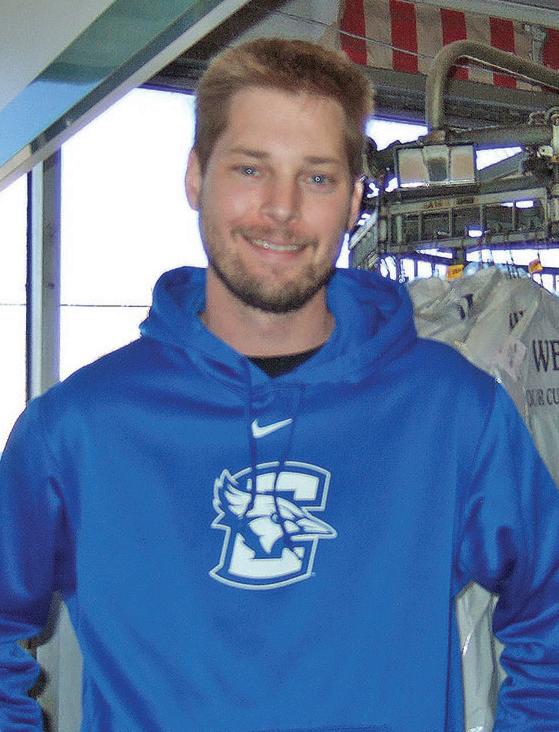






from Page 1
May, West was diagnosed with Glioblastoma, an aggressive brain cancer. West passed away in October that year.
Amoreena and Josh felt the natural thing for them to do was to take over the studio. Despite a challenging transition, they continued the legacy. Their focus was to continue bringing the best of what West himself brought to the neighborhood.
“You help your neighbors out,” Corbin said. “Having that sense of community, still having community events. My dad was always very involved at Brown Elementary. And fixing people’s favorite thing that broke and that no one else would fix, we get told that all the time.”
Corbin described how they often hear from people in the neighborhood who called 10 shops that refused to help them with small welding repairs. The studio makes time for those folks when others don't, helping them with repairs and not charging them, just like Corbin’s dad did.
Corbin knows residents in the community are upset with this change, but she wanted to emphasize “the owners of that property behind the scenes over the years have done so much to help us keep that place going. They supported my dad a lot and they have supported us a lot.
Recently, owners of the property where the studio operates indicated that they are going to sell.
Corbin knows residents in the community are upset with this change, but she wanted to emphasize “the owners of that property be-
Continued from Page 3
pultepec Too once stood. A for-sale sign reads “Shovel-Ready Apartment Building or Franchise Site!”
A concept plan filed with the city describes the shovel-ready project as a three-story, 28-unit apartment structure with ground floor retail or restaurant space and 18 parking spaces.
3805 N. NEWTON ST.
A fenced-off lot at the corner of West 38th and Newton, next to Taco Bell, is the future site of a two-story, six-condo structure with two attached garages, according to a site concept plan filed with the city. A nearby resident said the site formerly held a single-family structure that had been converted into a dental office.
Stultz Homes, listed on signage posted at the site, includes the property on the upcoming projects page of its website, stating they are coming in December 2024.
3301 W. 38TH AVE.
The site of the former Thai Basil restaurant at 38th and Irving will become a three-story, 44-unit apartment building with groundfloor retail, according to a site development plan filed with the city.
A representative for the developers pointed The Denver North Star to a March 2022 article on the project in The Denver Post. The story reported that developers John Cianci and Mike Carnes bought the property in 2018 and cycled through a number of plans for it, including a hotel and condominiums, before landing on the current plan.
The plan filed with the city shows studio, one-bedroom and two-bedroom apartments ranging from 328 to 813 square feet as well as 24 parking spaces.
The city’s Expanding Housing Affordabil-
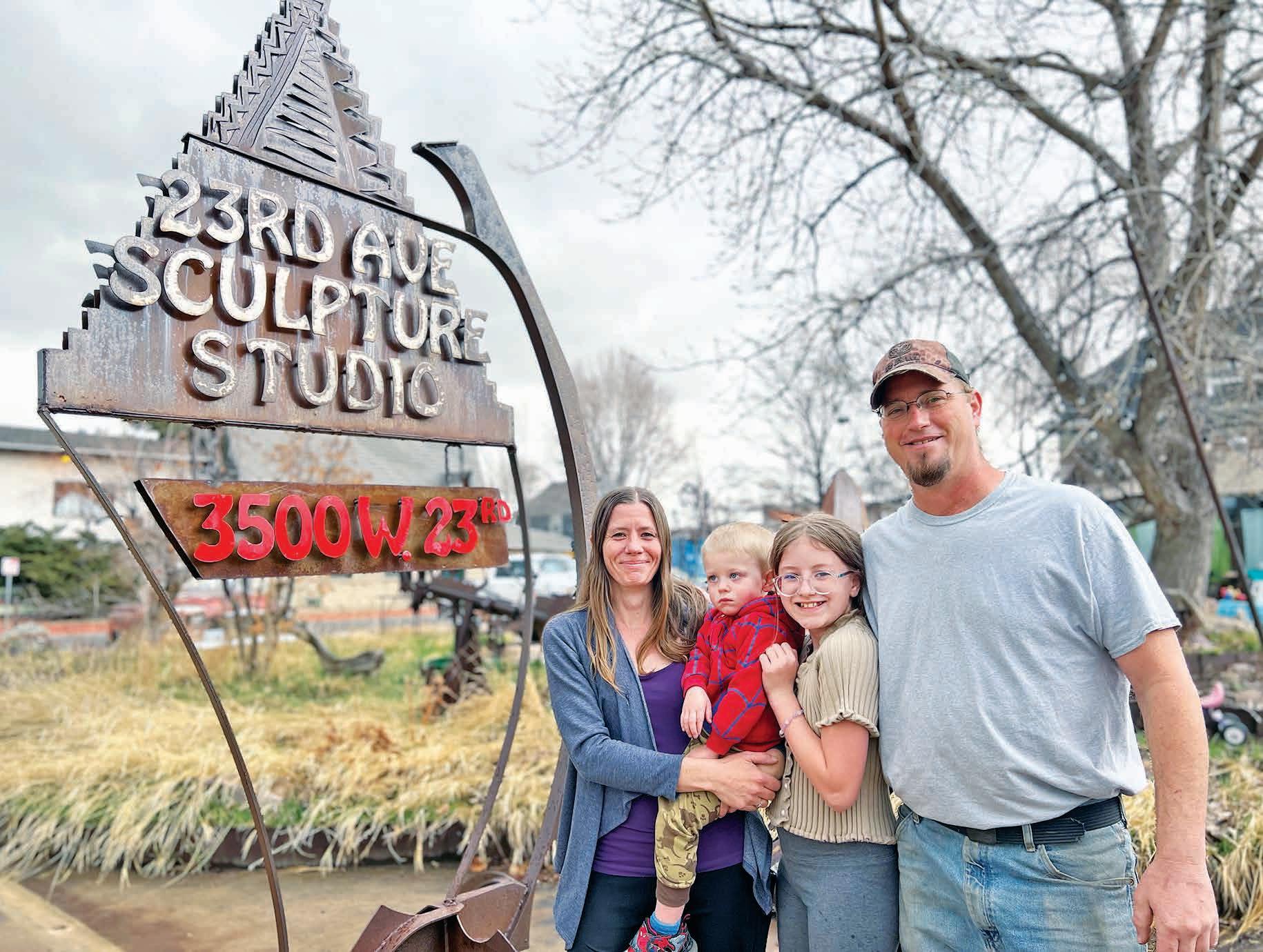
hind the scenes over the years have done so much to help us keep that place going. They supported my dad a lot and they have supported us a lot. And so while it's really difficult that they are selling, we feel like people don’t really know how much they have done behind the scenes.”
“There was a time,” Cobin continued, “when my dad started, that he couldn’t pay rent, and they let him stay for a long time without paying rent, and they never made him pay it back. For us, while it’s very up -
setting, we feel like we know it could and probably would happen at some point. If you look at the property values and property taxes we knew it would come some day. The universe makes things happen how they are supposed to, and we feel like it's time to find our next place.”
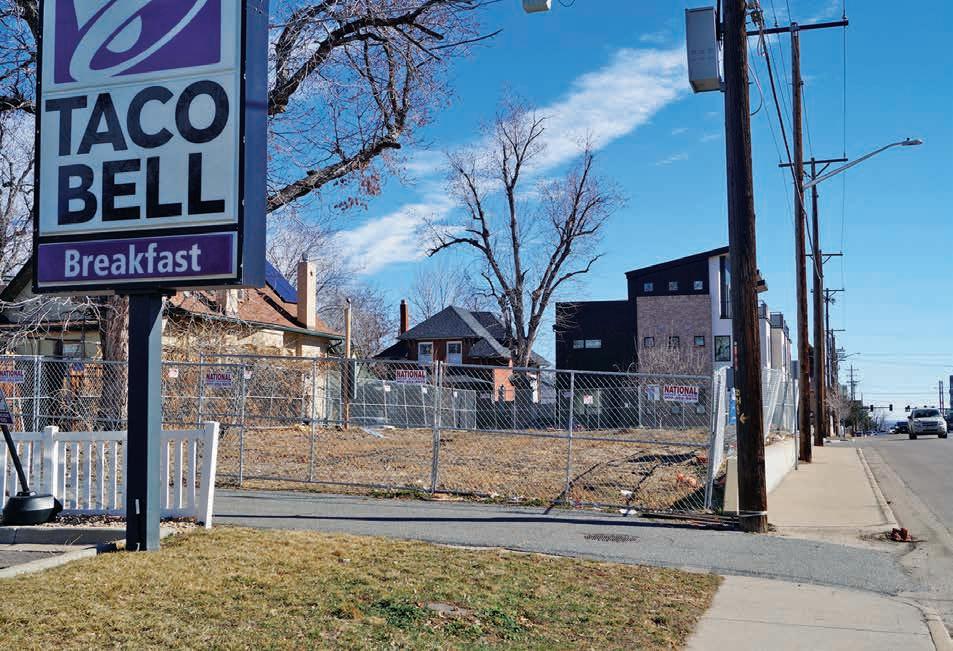
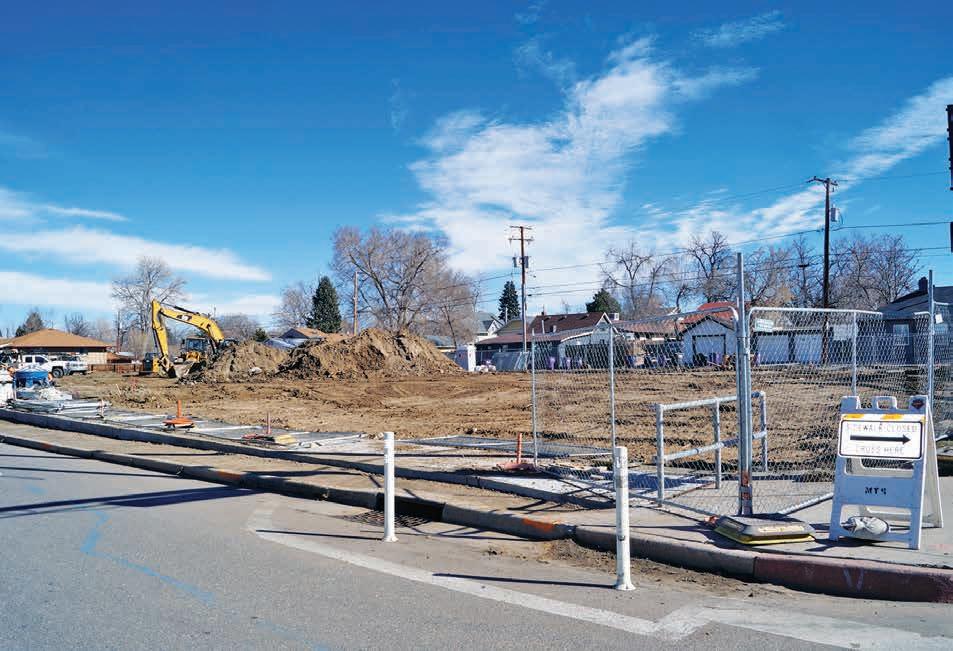
Amoreena and Josh Corbin plan to continue to work with a handful of key Denver customers.
23rd Avenue Sculpture Studio will host one last neighborhood party on July 20 from 2 to 8 p.m.
In the meantime, the Corbins are working to sell everything at the studio. Interested community members can stop in at 3500 W. 23rd Ave.
Corbin shared that while their new place is not close, it is perfect for what they need. They found a location on the Western Slope in Paonia that has a house, shop and acreage. They plan to be out by the end of summer so their kids can start school in August there.
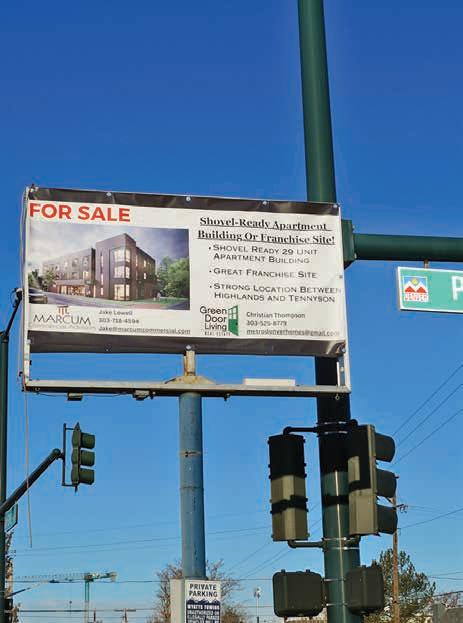
ity (EHA) policy, enacted in 2022, applies stronger requirements than previously for housing developments of over 10 units to contribute to the city’s affordable housing goals. Projects already in the process of gaining city approvals and permits at that time, which was the case for most of the projects described above, did not trigger new EHA requirements.
Readers with an interest in following these and other North Denver construction developments can look at site development plans on the city’s Maps page at www. denvergov.org/maps, dive deeper into plan drawings (and much more) using a free account at www.denvergov.org/epermits, and connect with their nearest Registered Neighborhood Organization (RNO). A searchable map of RNOs can be found at www.denvergov.org/Maps/map/neighborhoodorganizations.
for “Rock of Ages” was hooked.
“Is that band set up ON stage?”
“Whoa, did the kids make that neon?”
“Oh my gosh, those concert posters are from other shows they did here.”
All that before the band played its first note and a bathroom door setpiece made its appearance. The piece, on wheels that revolved around to reveal, you guessed it, a full bathroom, would go on to feature one of the musical’s most pivotal scenes.
As the lights came up and the band began playing from its elevated spot on the first floor of the two-story set, the audience met Lonny, the unfalteringly energetic host for the evening. With the first mash-up of famous ’80s rock tunes, the crowd was reeled in. If you were the right age in the 1980s, you knew every word to every song in the show. And while the small-town-girl-inL.A.-to-make-it-big-gets-caught-in-lovetriangle story may be cliche, it was compelling. The audience wants Sheri to end up with the good guy.
And the story had a twist many in North Denver have become familiar with.
“Rock of Ages” is not just a love story between characters, but a love story about a place. When out-of-town developers arrive with a diabolical plan to demolish L.A.’s Sunset Strip and replace the Bourbon Room (a rock’n’roll venue based loosely on L.A.’s famous Whiskey a Go-Go) with a frozen yogurt shop and a Foot Locker, the cast sets about saving it.
It was not lost on the students that a sponsor of their production, The El Chapultepec Legacy Project, received word the weekend of their show that the El Chapultepec building, a cherished downtown music venue that closed in 2020, would be torn down despite efforts by Historic Denver and community members to protect it. Neon protest signs brandished during the Twisted Sister “We’re Not Gonna Take It” numbers in the show would have fit in at real-life protests attempting to save El Chapultepec.
I won’t spoil the ending. If you missed North’s production and you like ’80s rock, I hope you’ll see it someday. But I can't imagine a better production than the one this crew put on.
The audience was raucous in its applause and effusive in praise during the intermission and after the show. In the end, the school delivered sold-out shows in an auditorium that seats nearly 800 and a thrilling, Monday-night finale for students and school staff.
North’s production of “Rock of Ages” was the place to be, if you wanted to see skilled singers, dancers and actors showcased by wonderfully precise and fun choreography, engaging stage direction, professional level musicians, wonderfully enhancing lighting on a set with something new to notice in every moment and costumes that captured the neon/acid wash/shoulder pad wonder that was the 80s. If you wanted to see a show that would have an audience clapping along the whole time and on its feet in ovation before the final number had even finished.
This was the place.
Not because of the building, but because of the people who work and learn in it, people who are dedicated to creating opportunities for connection. Teachers to students. Students to their learning, and to each other. Students to themselves, and who they can be in a team. The performing arts program to the school. The arts to real life. The school to the broader community. Connections that matter.
Gilman said she hopes that the community will see what North is producing and that parents will think, “I don’t have to go outside the district, I don't have to go across town to a specialized program. My kid can go to North and feel part of something.”
Echevarría said he understands the importance of the arts in schools, as well as the magic of teachers who strive to get the best
“I think my favorite part of being in theater at North is the strong and inviting community that welcomes so many new faces each year and grows tighter and tighter as a group.”
– Greta Chiodini, Junior“Every person there is working towards the same goal, and it provides a sense of oneness which is really amazing, not only to participate in but also to see.”
– Ellen Youngstrom, Junior“Having the ability to be seen, but not just like a high school performance but seen as a valuable component of the community, is just super important, and it feels like the entire theater program is valued beyond just people putting on a show.”
– Max Gonzales, Junior“Being involved with theater at North is being able to connect with so many people on such a deep level. It’s unlike any other thing you can involve yourself with in high school.”
– Max Taylor“When you find a community that you fit in, hold on to it for as long as you can.”
– Tate Dewhurst, Senior“I love that we can escape reality for a while and just have fun!”
– Alicia Leyba-Valdez“Students find themselves here and then they flourish.”
– Chris Pettis, Juniorfrom their students.
“She sees everything that’s good about them, and then they see that,” Echevarría said of Gilman. “They see that she is invested in them and then they reciprocate that.”
“As teachers it would be easier to put on performances that require a lot less care and effort,” music director and teacher Grant Stringham said, “but we always seek to push the envelope and to challenge ourselves which I think is important for our students to see.
“Can it be absurdly stressful sometimes?” Stringham added. “Absolutely ... but the rewards of seeing the kids giving their all during the performances and wowing the audiences far outweighs the stress."
One-hundred-twenty-five moving parts all headed in one direction: to entertain us and remind us that connection and a sense of place matter.






